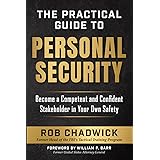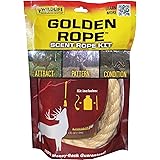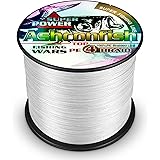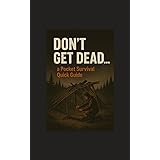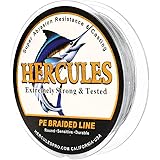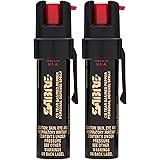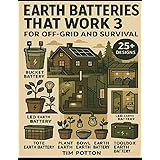Securing Your Health: The Indispensable Role of Emergency Prescription Medical Kits
In an increasingly unpredictable world, the reliability of foundational systems—including our medical supply chain—has come under scrutiny. The insights from the accompanying video aptly highlight a pressing concern: access to critical prescription medications in scenarios ranging from international travel to off-grid exploration, or even during widespread domestic disruptions. While conventional healthcare access is often taken for granted, the stark reality of supply chain vulnerabilities, vividly demonstrated throughout the 2020s, necessitates a proactive approach to medical preparedness. This is where a comprehensive, personalized emergency prescription medical kit emerges not as a luxury, but as a strategic imperative.
The Imperative for Personalized Emergency Medication Access
The speaker in the video, Sam from Prepmedic, underscores a universal truth: daily reliance on specific medications, such as levothyroxine for a chronic condition, transforms pharmaceutical access from a convenience into a matter of survival. This personal anecdote resonates with countless individuals whose health trajectories are intrinsically linked to a steady supply of prescribed drugs. Beyond chronic care, the utility of a specialized kit extends dramatically into two primary domains:
- International Travel: Navigating foreign healthcare systems, particularly in regions with nascent medical infrastructure, can be daunting. Language barriers, differing pharmaceutical regulations, and the sheer unavailability of specific medications can transform a minor ailment into a severe crisis. An individualized supply mitigates these risks, empowering travelers with immediate, physician-approved care.
- Off-Grid and Wilderness Exploration: When conventional medical facilities, or even reliable telehealth services, are hours or days away, self-sufficiency becomes paramount. Whether deep in the backcountry or isolated during a disaster, the ability to administer appropriate medications can prevent deterioration, manage pain, and potentially save lives.
Traditional first aid kits, while essential, rarely contain prescription-strength interventions. This gap in preparedness is precisely what a robust off-grid medication supply aims to bridge, offering a curated selection of drugs to address a spectrum of acute and subacute conditions that might otherwise escalate dangerously.
Navigating the Acquisition: From Consultation to Customization
The process of obtaining an emergency prescription medical kit, as exemplified by Duration Health, deviates significantly from a typical over-the-counter purchase. A key differentiating factor is the mandatory, in-depth telehealth consultation with a licensed physician. Far from a cursory review, this session is designed to thoroughly assess an individual’s specific medical history, pre-existing conditions, lifestyle, and anticipated activities.
This personalized approach is critical. For instance, an individual planning a high-altitude mountaineering expedition might require Dexamethasone for acute mountain sickness prophylaxis, while a frequent traveler to malaria-endemic regions would necessitate specific antimalarial medications like Doxycycline. Similarly, a severe allergy sufferer, like the speaker, will prioritize auto-injectable epinephrine (EpiPens). The physician’s role is to tailor the kit, adding or removing medications to create a truly bespoke travel medical kit, optimizing efficacy while adhering to rigorous medical standards. While additions may incur extra costs, the value derived from this precision medical planning is immeasurable when circumstances demand it.
Pillars of Prudent Preparedness: Understanding Key Medications
A well-stocked emergency medical kit is a testament to strategic foresight, encompassing a diverse array of pharmaceuticals. The video provides an excellent overview; however, a deeper dive into the clinical rationale behind each inclusion further solidifies their importance in a disaster preparedness medication kit.
Acute Anaphylaxis and Respiratory Distress
- Epinephrine Auto-Injectors (EpiPens): These are life-saving medications for acute anaphylactic reactions. Administered intramuscularly, they rapidly counteract severe allergic responses. The universal adult dose (0.3 mg) makes them highly effective across individuals, though the ethical and legal implications of administering prescribed medication to others must always be considered. The speaker astutely notes the possibility of rebound reactions, justifying the inclusion of two injectors.
- Albuterol Inhaler: For individuals with asthma or other obstructive airway conditions, Albuterol provides rapid bronchodilation. Its consistent dosage and delivery mechanism make it a reliable first-line treatment for acute exacerbations, even in austere environments.
- Prednisone: A potent systemic corticosteroid, Prednisone is vital for managing persistent inflammation associated with severe asthma or allergic reactions. While its onset is slower (1-2 hours) compared to an EpiPen or Albuterol, it offers sustained relief, reducing airway inflammation and preventing further progression of respiratory distress. It serves as a crucial follow-up or adjunctive therapy for acute events.
Combating Infection: The Art of Antibiotic Stewardship
The inclusion of antibiotics in an emergency kit immediately raises the critical discussion of antibiotic stewardship. As the speaker rightly emphasizes, antibiotic resistance is a global health crisis, directly fueled by inappropriate use. Alarmingly, an estimated 25-50% of antibiotic prescriptions in the United States are made inappropriately, often for viral infections against which they are ineffective. Responsible use, including completing the full course of treatment, is paramount to prevent the proliferation of “superbugs” and ensure these vital drugs remain effective.
- Amoxicillin: A broad-spectrum penicillin-class antibiotic, effective against a wide range of bacterial infections. It’s particularly useful for bite wounds (human or animal), ear infections, sinus infections, and dental abscesses—conditions that can rapidly become life-threatening without timely intervention in remote settings.
- Azithromycin: A macrolide antibiotic often used for those with penicillin allergies. It targets respiratory tract infections (e.g., pneumonia), abdominal infections, ear infections, and strep throat. However, its historical misuse against viral upper respiratory infections underscores the importance of the educational component of a comprehensive kit.
- Doxycycline: This broad-spectrum tetracycline antibiotic boasts remarkable versatility. It is a first-line treatment for tick-borne diseases like Lyme disease and Rocky Mountain spotted fever. Critically, it also treats less common but severe infections such as tularemia and even bubonic plague (a concern, as noted, in specific regions like Colorado). Furthermore, Doxycycline serves as effective malaria prophylaxis, making it invaluable for international travelers.
- Ofloxacin (Ophthalmic/Otic Drops): Specifically formulated for bacterial ear and eye infections (e.g., conjunctivitis, otitis externa). Localized antibiotics are crucial for preventing more serious systemic spread from what might initially seem like minor irritations. The necessity of completing the full course for localized infections is just as vital as for systemic ones.
Beyond Infection: Nausea, Dermatitis, and High-Altitude
- Ondansetron (Zofran): This antiemetic medication, often provided in sublingual meltable tablets, is highly effective in controlling severe nausea and vomiting. Dehydration from sustained emesis in remote environments can be debilitating and dangerous, making Ondansetron a critical component for maintaining hydration and comfort.
- Triamcinolone Cream: A high-potency topical corticosteroid, Triamcinolone is invaluable for treating acute dermatitis, severe poison ivy, oak, or sumac reactions, and localized allergic rashes. It rapidly reduces inflammation, itching, and discomfort, preventing secondary infection from scratching.
- Dexamethasone: While Prednisone is a general systemic steroid, Dexamethasone is specifically highlighted for its efficacy in treating high-altitude cerebral edema (HACE) and high-altitude pulmonary edema (HAPE), as well as acute mountain sickness. Its broad anti-inflammatory properties also make it useful for severe allergic reactions or respiratory issues, showcasing its remarkable utility across diverse medical scenarios. It can be used both therapeutically and prophylactically for rapid ascent to extreme altitudes.
Essential Over-the-Counter and Support Medications
- Diphenhydramine (Benadryl): A first-generation antihistamine, Benadryl is effective for managing hives, itching, and mild allergic reactions. Crucially, the speaker emphasizes that while it provides comfort, it is *not* a life-saving medication for anaphylaxis and should only be used as an adjunct to epinephrine.
- Loperamide (Imodium): An anti-diarrheal medication, Loperamide is essential for managing acute diarrhea. In wilderness or disaster scenarios, rapid dehydration from diarrhea can quickly lead to critical electrolyte imbalances and overall debilitation.
- Acetaminophen (Tylenol): A common analgesic and antipyretic, Tylenol provides relief from minor pain and fever. Its inclusion ensures basic symptomatic management, though careful adherence to dosage limits is always necessary to prevent hepatic toxicity.
Maximizing Longevity: Shelf Life, Storage, and Continuous Readiness
While the kit may have an official shelf life of one year, the nuances of medication expiration dates are critical for anyone investing in long-term medication preparedness. The speaker correctly notes that many medications, particularly when stored under optimal conditions (temperature-controlled, low humidity, out of direct light), often retain potency well beyond their printed expiration dates. This is a widely acknowledged, albeit unofficial, understanding within the medical and preparedness communities. Duration Health’s proactive email reminders and replacement service are valuable for ensuring compliance with official guidelines and maintaining maximal potency, though an informed understanding of extended viability can be a valuable asset in true survival scenarios.
The Unseen Value: Field Guides and Medical Literacy
The inclusion of a comprehensive field guide elevates these kits beyond mere pharmaceutical repositories. Such guides empower users with critical decision-making tools, outlining indications, contraindications, common dosing regimens, and adverse effects for each medication. Beyond specific drug information, a robust guide, as mentioned, can cover broader emergency medical skills such as CPR, trauma management, and basic diagnostic algorithms. While the speaker desired a more technical depth in the medical descriptions, the overall value of such a resource for a layperson operating without direct medical supervision cannot be overstated, transforming the kit into a portable medical library.
Proactive Medical Preparedness: A Strategic Imperative
Ultimately, the investment in an emergency prescription medical kit transcends mere acquisition; it embodies a philosophy of proactive self-reliance and intelligent risk mitigation. In a world where consistent access to healthcare and pharmaceuticals is no longer a given, equipping oneself with the means to manage acute medical events and chronic conditions is not just prudent—it is a strategic imperative for personal and family security.



